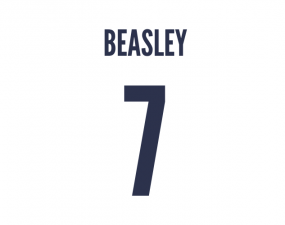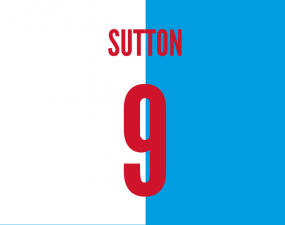Player Profile: Graeme Le Saux
Date of Birth: 17/10/1968
Height: 5 ft 10 in
Position(s): Left-winger/left-back
National Team: England
International Caps: 36
International Goals: 1
Club Career
High-quality full-backs are at a premium in world football. And, far from this being a contemporary issue, it has always been this way. Why? Well, there is an argument to be heard that full-back is the least glamorous of all the positions on the pitch. Statistically, they score by far the least amount of goals of all the outfield positions. There is none of the heroic glory of centre-halves, and until recently, full-backs have never been able to influence a game as much as a midfielder.
Good quality left-sided full-backs, in particular, are exceedingly hard to come by. The reason for this is simple: there are far fewer left-footed players. It stands to reason, then, that those who can play the position and do so brilliantly are worth their weight in gold. One such player is Graeme Le Saux.
Born in Jersey, one of the Channel Islands off the coast of France, Le Saux made his first tentative steps into the world of football playing for St Paul’s, an amateur outfit playing in Jersey itself. Naturally, for an island with a population of less than 100,000, there is not a strong footballing culture. For this reason, Le Saux is heralded as one of the island’s greatest-ever athletes.
He moved to London when he was 19 and was scouted by Chelsea soon after. John Hollins, the manager of Chelsea at the time, recognised that, even as a latecomer to professional football, Le Saux oozed class both on and off the ball.
He was excellent going forward and as such started his career as a left-winger rather than a left-back. His tenacity and grit were central components of his game. He was eager to win the ball back whenever his team lost it and his guile and determination when leading the press was truly ahead of his time.
Le Saux made his first senior start in 1990 in a draw against Portsmouth. Chelsea finished in 11th place that season as he made a handful of appearances, some from the bench and some from the start.
In his second full season as a professional, Le Saux’s name became a much more common sight on the Chelsea team sheet. He would play 78 times for the club over a four-year stint, scoring eight goals in the process.
In 1993, Le Saux played for Chelsea in a Premier League clash with Southampton which the onlooking crowd assumed would be his last. The reason being that when he was substituted, he ripped off his shirt and threw it on the floor. The gesture, which was performed right in front of manager Ian Porterfield, was seen as a huge show of disrespect towards the club and Le Saux was shown the door shortly after.
A very talented and dextrous footballer, Le Saux had no shortage of suitors vying for his signature, even if his reputation had been sullied somewhat thanks to his disruptive antics on his final day at Chelsea.
Blackburn Rovers offered what proved to be the most appealing financial package to Le Saux and he signed for the club the same summer. Rovers were a club very much on the up. The money pumped into the club by owner Jack Walker – who also happened to be a Jersey native, meant that they were challenging for the title immediately upon their promotion from the second-tier in 1993.
Kenny Dalglish was the man in charge of the club at the time. A legend as a manager and a player, Dalglish had recruited a number of A-List players at considerable cost. Alan Shearer, Tim Sherwood, Chris Sutton and Tim Flowers were among the crop of signings brought into the club around the time of Le Saux’s arrival. Far from Le Saux being persuaded solely by the money, he was joining a club with incredibly lofty ambitions.
They finished as runners-up to Manchester United in the 93-94 season with Le Saux a constant presence in the back-line. By this time, he had been completely converted into a defender and was excelling in the role. In his second full campaign at Ewood Park, Blackburn were crowned Premier League Champions; it was the first major honour of Le Saux’s career.
After the triumph, however, Rovers slumped. Their league positioned waned for several years before they were relegated. By this time, Le Saux had abandoned ship and his destination was, somewhat surprisingly, Chelsea.
He returned to Stanford Bridge a better player than when he left. He helped the team win four trophies in his second stint, including the UEFA Cup Winners Cup in 1998.
However, his time with the club was irretrievably marred by the horrific homophobic abuse that followed him everywhere. The reasons for this are unclear, even to this day. Le Saux, a heterosexual man with a wife and children, was scorned and ridiculed at near enough every ground across the country for the remaining years of his career.
The barrage peaked when Liverpool striker Robbie Fowler made a homophobic gesture at Le Saux during Chelsea’s match at Anfield in 1999. Le Saux has since spoken of the abuse he received as a result and how Fowler has refused to apologise in the 20 years since.
Le Saux joined Southampton in 2003 in a swap deal which saw promising youngster Wayne Bridge go in the opposite direction. He played 44 times for Southampton in two seasons, scoring twice. Le Saux hung up his boots after failing to save the club from relegation to the Championship at the end of his final season.
International Career
Graeme Le Saux made six appearances for England youth teams before making his bow for the senior side in 1994. He went on to play 36 times for the Three Lions, scoring one goal.
This figure could be much higher, however. Le Saux was an integral part of the England side which played in the 1998 World Cup in France but was unavailable for selection for Euro 96 and Euro 2000 because of a persistent knee injury. Had this not been the case, Le Saux would have been part of the iconic team which reached the semi-finals of the tournament on home soil in ‘96.
His only goal for his country came in a friendly against Brazil in 1995. The strike, a left-footed half volley from 25 yards, is consistently referred to as one of the best goals any England player has ever scored in an international.
Where is Graeme Le Saux Now?
Since retiring, Le Saux has been reluctant to re-enter the game in an official capacity. Perhaps this is due to the lack of support he received during his struggles with homophobic abuse.
Instead, he has made a career for himself in media. He regularly appears on Match of the Day and BBC Radio 5 Live.
Le Saux has also been acting as a sporting advisor for Spanish side Real Mallorca. Since his involvement with the club they have experienced consecutive promotions and are now back in La Liga after sinking to the third-tier of Spanish football.
Did you know? Interesting facts about Graeme Le Saux
– His autobiography Left Field: A Footballer Apart was released in 2007, it documents his struggles on and off the pitch and is thought of as a superb footballing memoir.
– In 2017, he was a celebrity guest on ITV gameshow The Chase.




